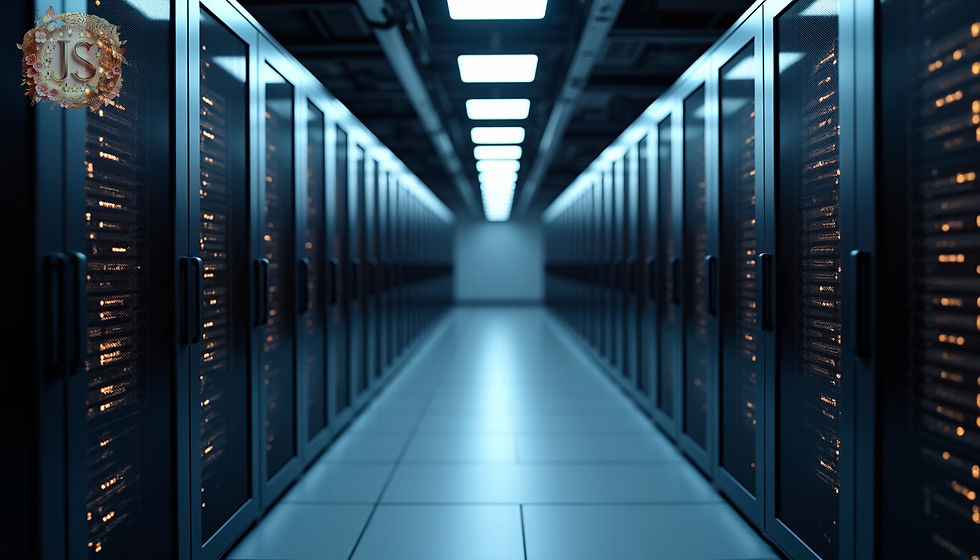How Exactly Does the Internet Work? The Everyday Essential Tool Broken Down And Explained In Detail
- Salma H
- Apr 16
- 4 min read
Updated: Apr 22
The internet has profoundly changed our lives. It affects how we communicate, learn, and gather information. Despite its presence, many remain unaware of how it all operates. In this post, we will break down the components of the internet, illustrating how it connects millions and enables us to easily access information from anywhere in the world.
What Is The Internet?
At a basic level, the internet is a vast network of computers that exchange data. These computers, often called servers, allow users around the globe to share and receive information seamlessly. This interconnected system, sometimes called the "network of networks," ensures smooth communication between various devices.
To illustrate, think of the internet like a postal system. While the postal service delivers physical mail from point A to point B, the internet sends data packets, which are tiny bundles of information, from one computer to another. For example, data travel across the internet at remarkable speeds, often in milliseconds, much faster than traditional mail.

The Infrastructure Of The Internet
The internet comprises several layers that work together for efficient connectivity and data transfer.
1. Physical Infrastructure
The internet’s physical layer includes various technologies that make connections possible. This includes:
Fibre Optic Cables: These cables are crucial for high-speed internet. They transmit data using light signals, capable of transmitting terabits of data per second. For instance, a fibre optic connection can typically provide speeds over 1 Gbps, making streaming and downloading much faster than standard copper cables.
Wireless Technologies: Wi-Fi and mobile networks, like LTE and 5G, connect devices without wires. For example, 5G can offer speeds up to 10 Gbps, allowing users to download an entire movie in seconds.

2. Data Transmission and Routing
When data travels across the internet, it passes through numerous routers and switches.
Routers: These devices direct data packets based on their destination. With billions of devices on the internet, routers analyse IP addresses and determine the quickest routes for data packets.
Switches: Operating within local networks, switches connect devices to allow effective communication. For example, a switch might connect several computers in an office, ensuring they can share files quickly.
3. Protocols and Standards
The internet thrives on standardised protocols that dictate how data is sent and received.
TCP/IP: The Transmission Control Protocol/Internet Protocol suite ensures reliable data transfer. For instance, TCP guarantees that data is both complete and in the correct order. This is especially critical for activities like video calls, where maintaining order is essential for clarity.
HTTP/HTTPS: Hypertext Transfer Protocol (HTTP) outlines how data transfers on the web, while HTTPS adds a layer of security through encryption. It is estimated that over 80% of websites now use HTTPS to protect user information.
How Data Travels Across the Internet
To grasp the internet experience, it helps to understand how data moves when we browse websites or stream videos.
Step 1: Requesting Data
When you type a URL into your web browser, several steps are triggered:
Domain Name Resolution: The browser converts the domain name, like www.example.com, into an IP address using the Domain Name System (DNS). Think of DNS as the internet's address book, essential for finding websites.
Sending a Request: After resolving the IP address, a request is sent to the server where the website is hosted.
Step 2: Data Transfer
Once the server receives the request, it processes it and sends back the necessary data:
Data Packets Creation: The requested information is broken into packets. For example, streaming a two-hour movie may involve thousands of packets.
Routing: The packets take various routes through numerous routers, ensuring they arrive quickly and correctly.

Step 3: Receiving Data
When the packets reach your device, they are reassembled:
TCP Reassembly: TCP reorders packets using sequence numbers, ensuring data integrity. This step is crucial when viewing complex content like videos or applications.
Rendering: Finally, the browser decodes the data and presents it, allowing you access to the requested content instantly.
Internet Security
Given the internet's growth, security measures are now vital.
1. Encryption
Encryption is vital for keeping information safe.
SSL/TLS: Secure Sockets Layer (SSL) and Transport Layer Security (TLS) protocols establish secure channels. They ensure that data like credit card numbers or login information remains confidential during transmission.
2. Firewalls and Antivirus Software
Firewalls act as protective barriers between trusted and untrusted networks. They monitor incoming and outgoing traffic, keeping potential threats at bay.
In addition to firewalls, antivirus software is crucial for protecting devices from malware. For instance, organisations that implement effective antivirus measures see a 30% reduction in data breaches.
The Role of Internet Service Providers (ISPs)
Internet Service Providers (ISPs) connect users to the internet. They use various technologies, including DSL, fibre optics, and cable to provide internet access.
ISPs play a critical role in maintaining internet infrastructure. They also handle technical support, ensuring users remain connected with minimal disruptions.
The Internet of Things (IoT)
The Internet of Things (IoT) describes a network of connected devices that share data over the internet.
Examples include smart home devices, wearable tech, and even smart city infrastructure. A smart thermostat, for instance, can adjust your home’s temperature based on your routine, promoting energy savings.
However, this increased connectivity introduces security and privacy challenges. Effective measures are necessary to protect the vast amounts of data from IoT devices, which are expected to reach 75 billion by 2025.
Final Thoughts
Grasping how the internet works enriches our understanding of this vital tool in our lives. The physical infrastructure, data transmission, and protocols that govern it all create a complex network, continually evolving to meet our needs.
With ongoing technological advancements, the internet will expand and adapt, bringing new devices and functionalities. Equipped with this knowledge, users can better appreciate the intricate systems that connect us, shaping our interactions and the future of digital communication. The internet is more than a utility; it is a dynamic ecosystem that influences how we live and engage with the world around us.
Sponsor


Comments